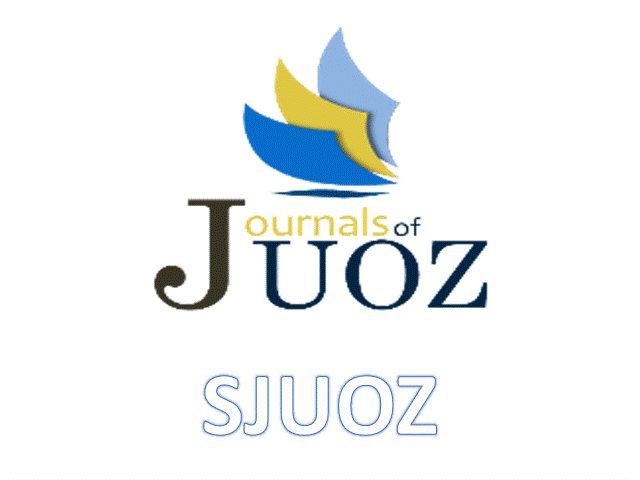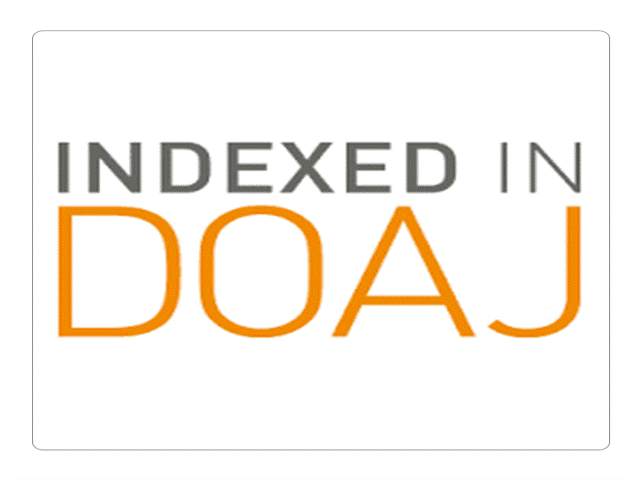Oil Reservoir Detection Using Volume Attributes in Chia Surkh Area, Kurdistan Region, Iraq
DOI:
https://doi.org/10.25271/sjuoz.2022.10.4.962Keywords:
3D Seismic attributes, Oil reservoir characterization, Hydrocarbon indicators, Chia Surkh, Kurdistan RegionAbstract
This study includes picking seven reflectors from intense sampling of 3D Seismic survey composed of 40 inlines and 30 crosslines, the distance between the seismic lines is equal to 250m. The study deals with extracting and analysing volume seismic attributes of 3D seismic data of Chia Surkh area. The area is located east of Kalar City, Sulaimani Government, Kurdistan Region, Iraq. The main aim is to determine locations of hydrocarbon accumulation by picking seven horizons as well as studying and analysing both subsurface structure and direct hydrocarbon indicators. The seismic volume attributes are calculated from the original seismic data that consist of (400) inlines and (300) crosslines, and the distance between two adjacent lines is equal to (25m). The seismic attributes used in the current study are, variance edge, curvature, root mean square, envelope and sweetness. Revealed existence of a major anticline, a major fault. As well as two small faults were detected and running parallel to the major fault, while the envelope and sweetness attributes emphasized appearance of several bright spots within Lower Fars, Dhiban, Jeribe and Euphrates Formations, which give quite evidence for accumulation of hydrocarbon. The study concluded that the complete system requires for existence of petroleum is available such as the major anticlinal structure, carbonate rocks as an excellent reservoir rocks and gypsum or (anhydrite) as an optimal cap rock. The existence of hydrocarbon is confirmed by bright spots.
Downloads
References
Adams, S., Abalioglu, I., Yıldızel, A., Mather, B., Flood, A., Onguner, B., Araque, A., Sallier, B., & Martinuzzi, V. (2013). Final Geological Report Well CS-11. Unpublished
Adero, B., Masinde, A, and Osukuku, G. (2017, 9-11 May 2017). Using Seismic Attributes for Reservoir Characterization Oil, Gas & Mines Africa, Exhibition and Conference (OGMA) Nairobi, Kenya.
Ahmed, U., & Meehan, D. N. (2016). Unconventional oil and gas resources: exploitation and development. CRC Press.
Al-Juboury, A. I., Al-Naqib, S. Q., & Juboury, A. M. A. (2001). Sedimentology And Mineralogy Of The Upper Clastic Units Of Fatha Formation, South Of Mosul, Iraq. Pure Sciences, 28(1), 26.
Al-Juboury, A. I., & McCann, T. J. G. (2008). The Middle Miocene Fatha (Lower Fars) Formation, Iraq. 13(3), 141-174.
Al-Qayim, B., Hussein, S., Qader, F. M., Al-Hakari, S. H., Shukor, B., Sardar, Z., Ahmed, D., & Abdullah, H. (2016). Integrated stratigraphic study of the Cretaceous petroleum-potential succession, Sulaimani area, Kurdistan, Iraq. Journal of Zankoy Sulaimani, Special Issue, GeoKurdistan II, 395-428.
Ameen, M. J. A. b. (1992). Effect of basement tectonics on hydrocarbon generation, migration, and accumulation in northern Iraq. 76(3), 356-370.
Avseth, P., Mukerji, T., & Mavko, G. (2010). Quantitative seismic interpretation: Applying rock physics tools to reduce interpretation risk. Cambridge university press.
Bellen, R. V., Dunnington, H., Wetzel, R., & Morton, D. J. A., Iraq. (1959). Lexique stratigraphique international. 3(10a), 324.
Brown, A. R. (2011). Interpretation of three-dimensional seismic data. Society of Exploration Geophysicists and the American Association of Petroleum Geologists.
Chen, Q., & Sidney, S. (1997). Seismic attribute technology for reservoir forecasting and monitoring. The Leading Edge, 16(5), 445-448.
Chopra, S., & Marfurt, K. J. (2005). Seismic attributes—A historical perspective. Geophysics, 70(5), 3SO-28SO.
Chopra, S., & Marfurt, K. J. (2007). Seismic attributes for prospect identification and reservoir characterization. Society of Exploration Geophysicists and European Association of Geoscientists and Engineers.
Dunnington, H. V. (1958). Generation, migration, accumulation, and dissipation of oil in northern Iraq: Middle East.
Fouad, S. F. (2010). Tectonic and structural evolution of the Mesopotamia Foredeep, Iraq. Iraqi Bulletin of Geology and Mining, 6(2), 41–53-41–53.
He, Y., Zhu, J., Zhang, Y., Liu, A., & Pan, G. J. O. J. o. G. (2017). The Research and Application of Bright Spot Quantitative Interpretation in Deepwater Exploration. 7(4), 588-601.
Jassim, S. Z., & Goff, J. C. (2006). Geology of Iraq. DOLIN, sro, distributed by Geological Society of London.
Liu, J., & Marfurt, K. J. (2006). Thin bed thickness prediction using peak instantaneous frequency. In SEG Technical Program Expanded Abstracts 2006 (pp. 968-972). Society of Exploration Geophysicists.
Partyka, G. A. (2001). Seismic thickness estimation: Three approaches, pros and cons. In SEG Technical Program Expanded Abstracts 2001 (pp. 503-506). Society of Exploration Geophysicists.
Pramanik, A., Singh, V., & Srivastava, A. (2003). Seismic attributes and their role in reservoir characterization. Proceedings of PETRO TECH- held in January.
Taner, M. (2001). Seismic attributes: Canadian Society of Exploration Geophysicists Recorder, 26(7).
Wang, L. (1984). The Bright Spot in Traditional Seismic Profile. Oil Geophysical Prospecting, 19, 80-86.
Yousif, F. H., Aziz, B. Q., & Baban, E. N. (2022). Subsurface Imaging of the Fatha Formation Utilizing 3D Seismic Data in Chia Surkh Area, Kurdistan Region, Iraq. Iraqi Geological Journal, 55(2B), 35-46.
Downloads
Published
How to Cite
Issue
Section
License
Copyright (c) 2022 Faris Haji Yousif, Bakhtiar Qader Aziz, Ezadin Najmadin Baban, Prof. Dr.

This work is licensed under a Creative Commons Attribution 4.0 International License.
Authors who publish with this journal agree to the following terms:
- Authors retain copyright and grant the journal right of first publication with the work simultaneously licensed under a Creative Commons Attribution License [CC BY-NC-SA 4.0] that allows others to share the work with an acknowledgment of the work's authorship and initial publication in this journal.
- Authors are able to enter into separate, additional contractual arrangements for the non-exclusive distribution of the journal's published version of the work, with an acknowledgment of its initial publication in this journal.
- Authors are permitted and encouraged to post their work online.








